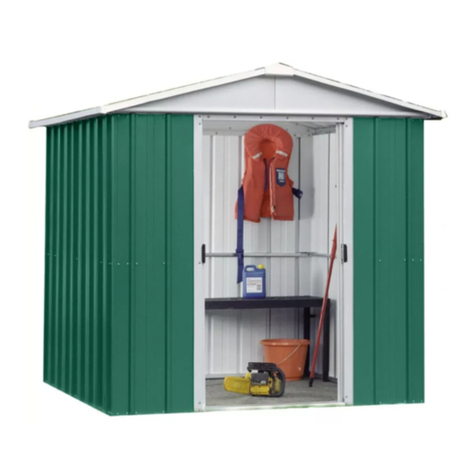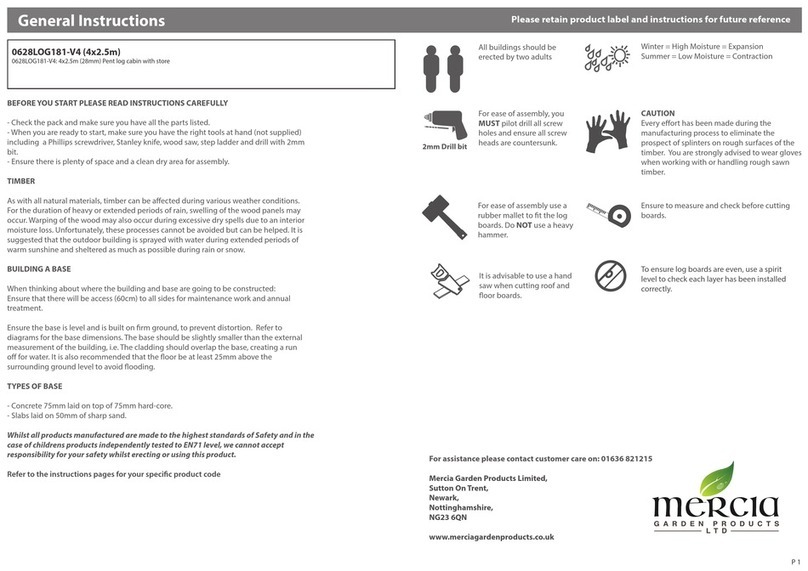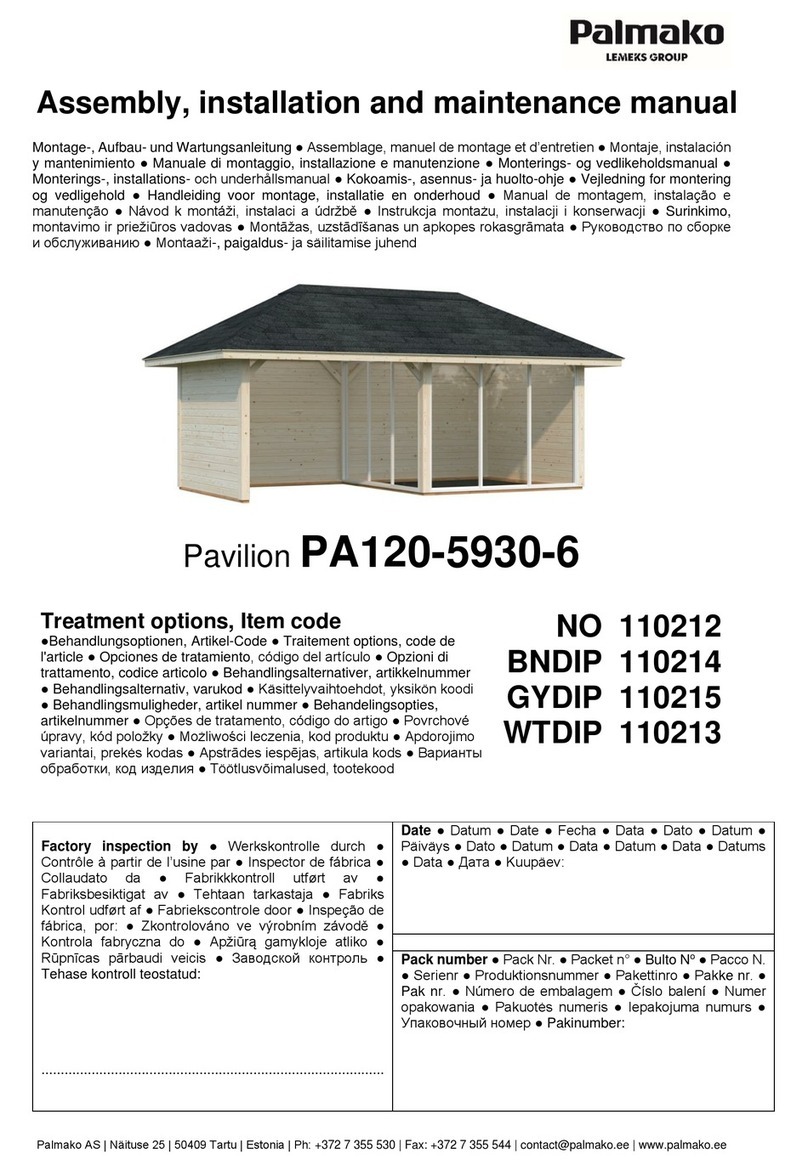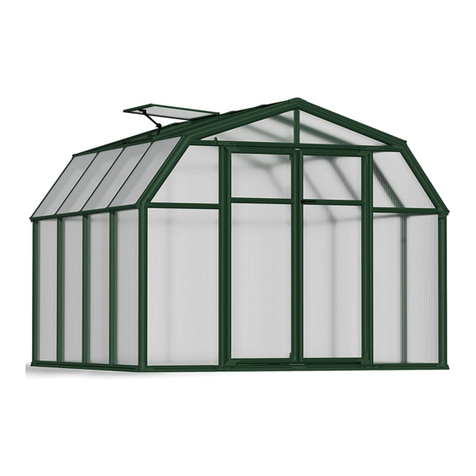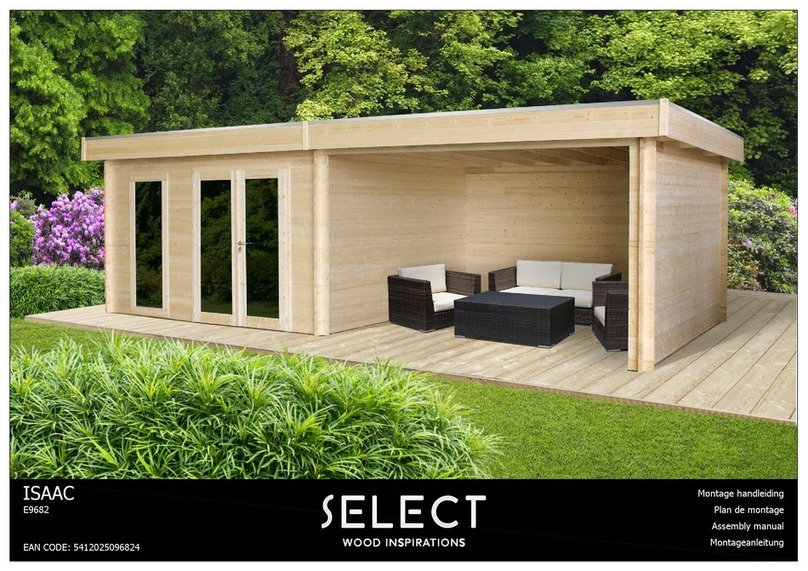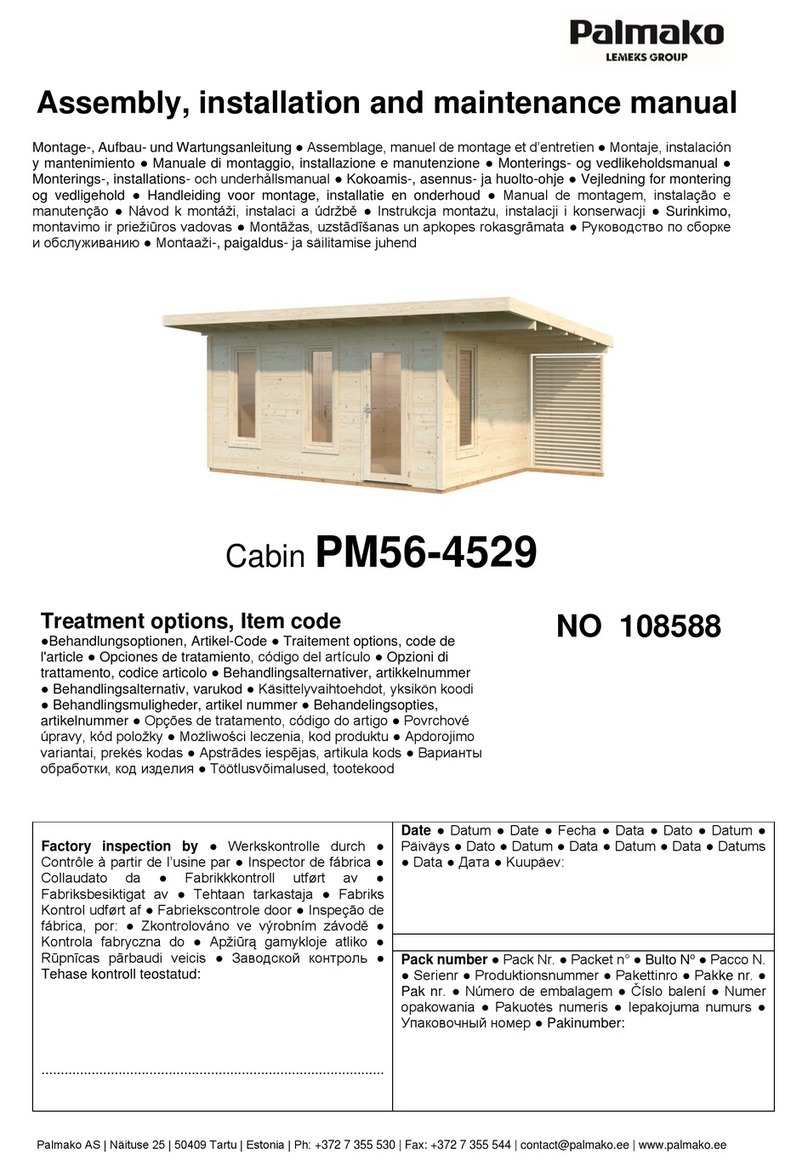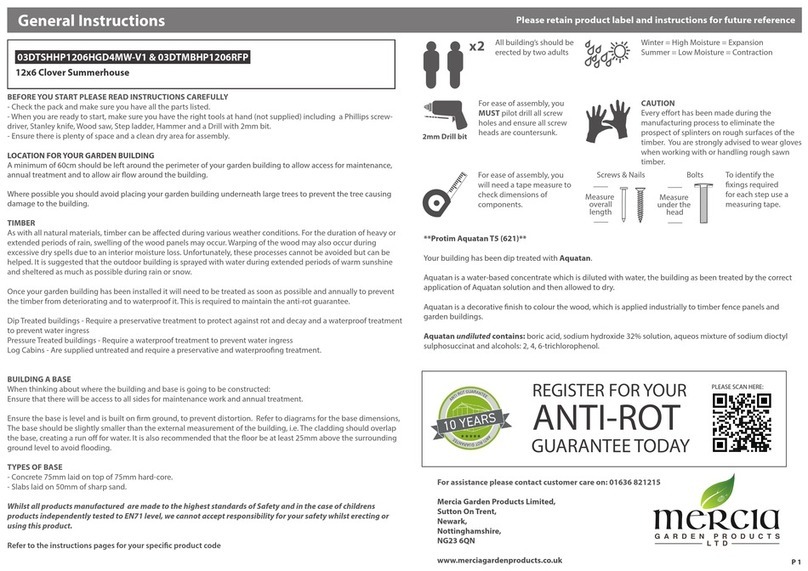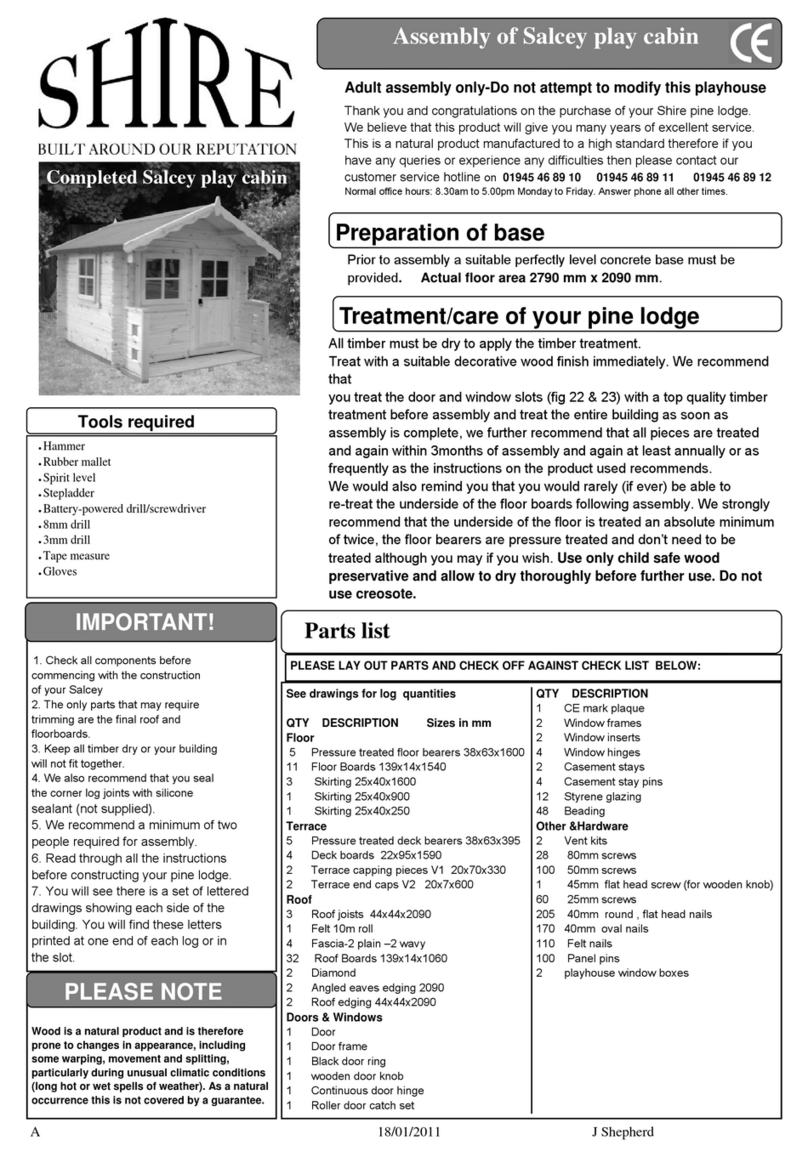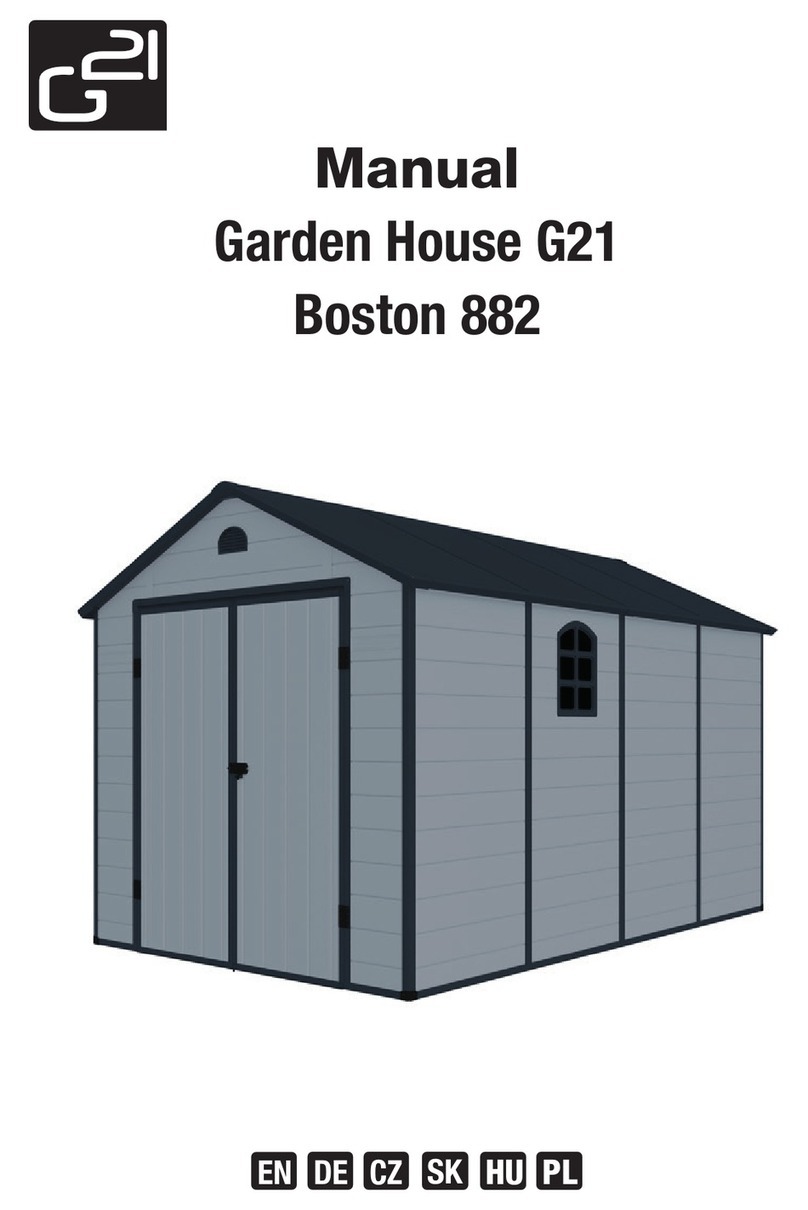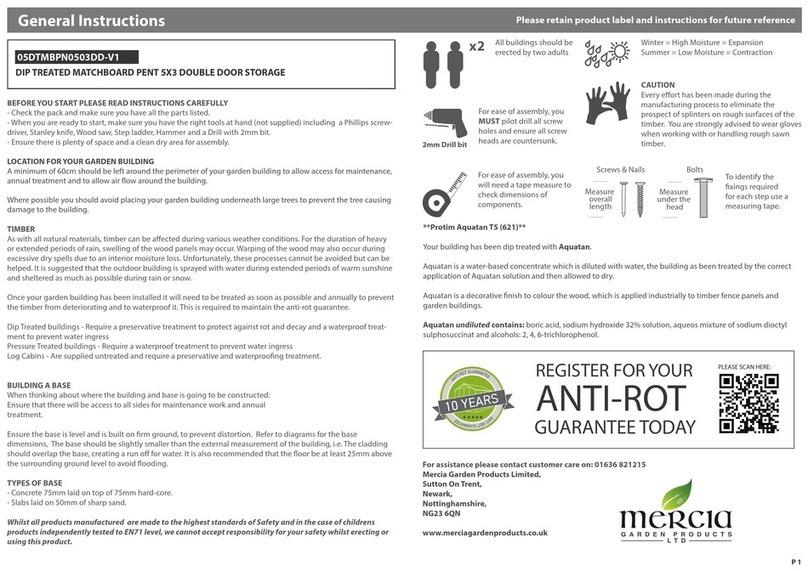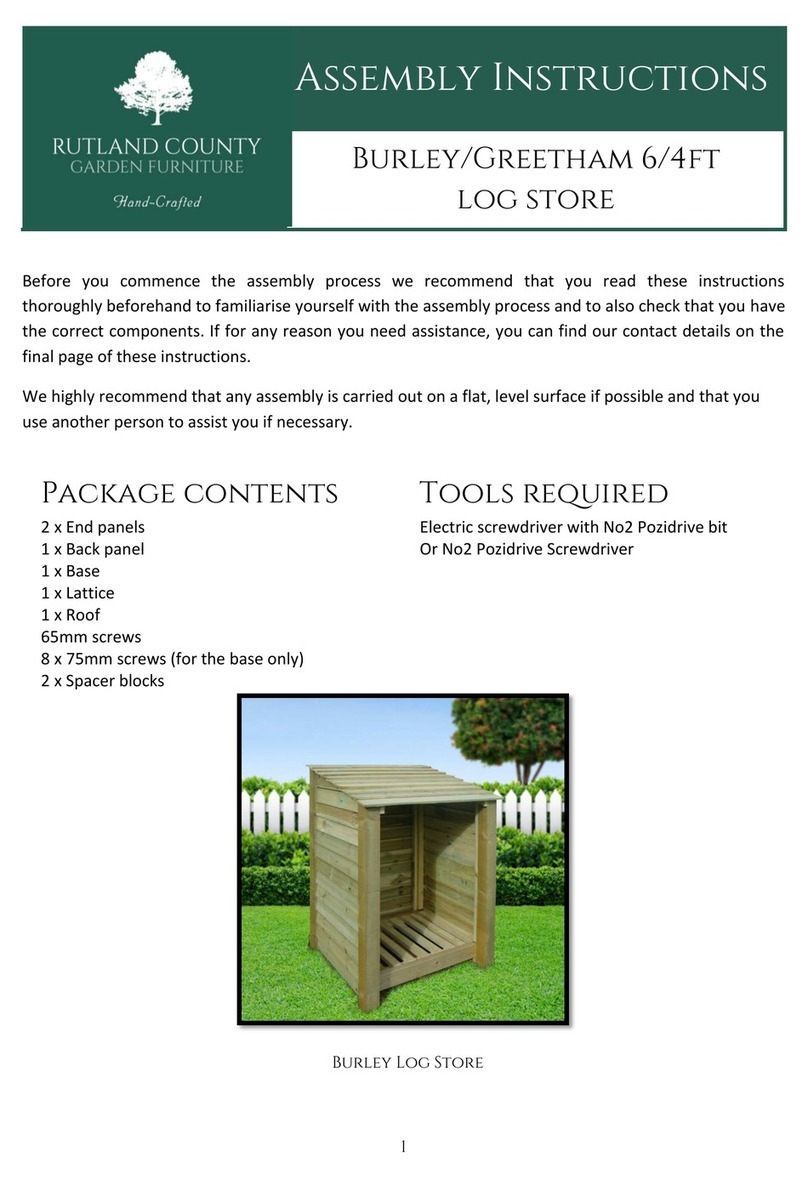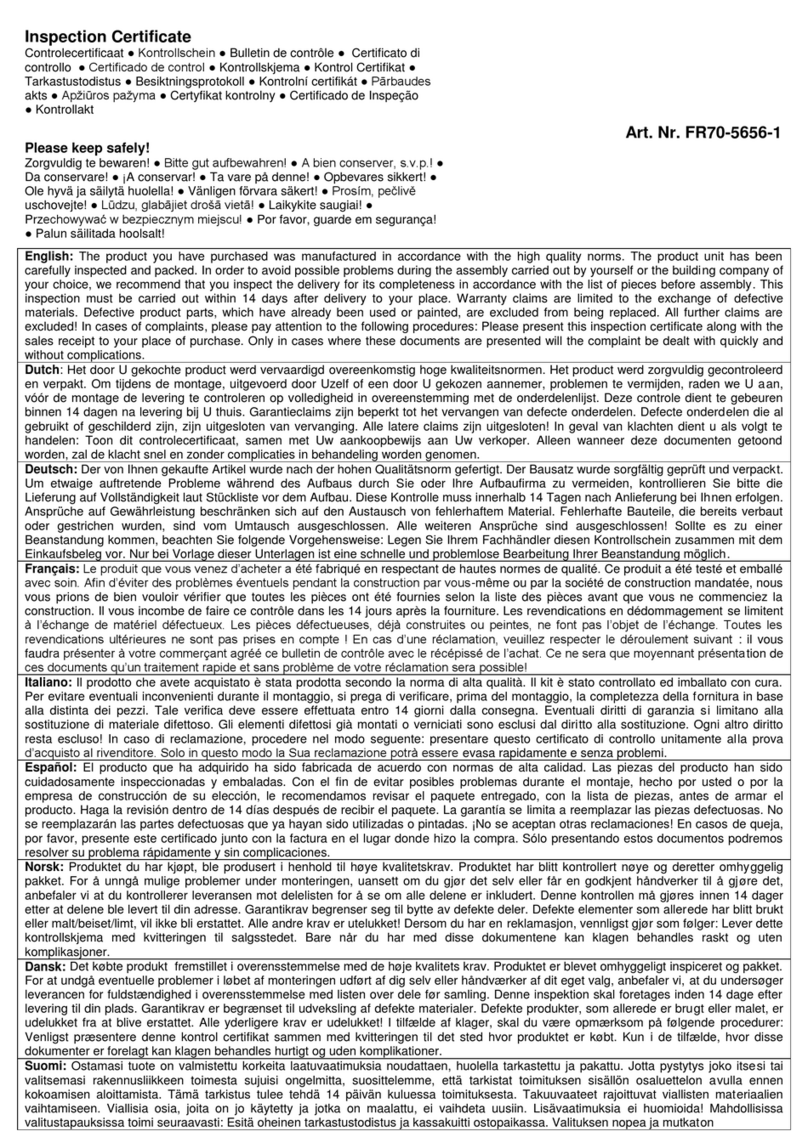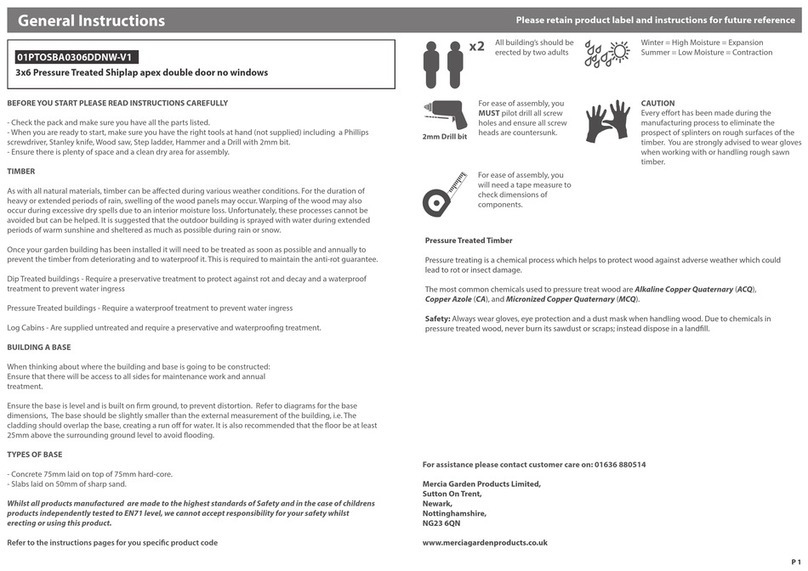
4
FREQUENTLY ASKED QUESTIONS
Q. How long will it take to assemble the building?
A. Assembly time depends on a variety of factors, including roof design, tools available, DIY skill and the pace
at which you work. Guidelines for each shed assembly are approximate AFTER completion of the base, and
assume two or more people working on the assembly. Generally, you should plan on at least one day working with
someone who can assist you; again, after constructing the base. Refer to the clock icons on each product page
on the website for specifi c time estimates.
Q. How do I decide where to put my shed?
A. The key to a successful assembly is to make sure the shed will be square and level when built. The shed can
be assembled directly onto level ground (grass or dirt). If you have location options, choose one that is already
fl at, with good drainage to control moisture. If you don’t have a fl at, well-drained area, you need to prepare the
space. Level the area using cinder blocks, concrete, crushed gravel or other sturdy materials. Once level with good
drainage, construct your base. Using a carpenter’s level, make sure your base is level and free of bumps or ridges
to provide good support for your building.
Q. What if I can’t fi nish my building in one session?
A. If weather conditions change so that it becomes windy or rainy, it is recommended that you stop assembly
until conditions improve. This is for your safety and for protection of the shed panels. However, do not leave
your unfi nished construction without fi rst temporarily anchoring the corners of the shed to your base and placing
weights, such as patio blocks or sandbags, on the fl oor frame. Failure to anchor the building if you leave it while
partially assembled could result in irreparable damage or personal injury if the building collapses.
Note: Most instruction manuals provide a warning note at the beginning of the installation step for corner panels,
stating that the remainder of the building assembly requires multiple hours and more than one person. Do not
continue beyond this point if you do not have enough time or help to complete the assembly that day. A partially
assembled building can be severely damaged by even light winds.
Q. Do I need to anchor my building?
A. Yes! Fully assembled buildings should be anchored using a permanent anchoring system. If you need to leave
your building before it is completely assembled, you will need to temporarily anchor the corners of the shed to your
base, and place weights, such as patio blocks or sandbags, on top of the fl oor frame.
Note: If you have to stop assembly for any reason before it is complete, do not leave your unfi nished construction
without fi rst temporarily anchoring the corners of the shed to your base and placing weights, such as patio blocks
or sandbags, on the fl oor frame.
Q. How do I temporarily anchor my building before it’s fully assembled?
A. An incomplete building must be anchored before breaking for any period of time to prevent possible damage.
•If the building is on a wood base, secure the frame with wood screws in the corners
•If the building is on a concrete base, temporarily anchor the frame in the corners
•Use patio blocks or sandbags on top of the fl oor frame as weights
•Secure the fl oor frame to the ground with ground augers or rope the frame in the corners to the ground
04A
